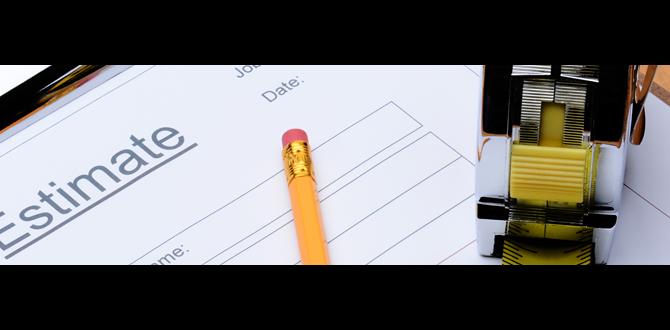Don’t let a malfunctioning nailer derail your project! A consistent nailer maintenance schedule for professionals keeps your tools firing accurately, extends their lifespan, and ensures safety on the job. Follow this essential guide to maintain your nail guns like a pro, from daily checks to annual deep cleans.
Hey there, fellow builders and DIY enthusiasts! Jack Shaffer here from Nailerguy. Ever had a nailer jam at the worst possible moment? It’s frustrating, right? Or maybe you’ve noticed your nailer isn’t quite as snappy as it used to be. That’s usually a sign it’s time for a little TLC. Keeping your nail guns in top shape isn’t just about preventing annoyance; it’s crucial for safety, efficiency, and making your tools last for years. I know it might seem like just another chore, but trust me, a little regular maintenance goes a long way. We’re going to walk through a simple, actionable schedule that will keep your nailers in perfect working order, project after project.
Table of Contents
Why Nailer Maintenance Matters
Think of your nailer like any other hardworking tool. If you don’t give it a bit of attention, it’s going to start showing its age and, more importantly, start acting up.
A well-maintained nailer:
- Fires nails accurately: No more bent nails or nails that don’t sink completely.
- Operates safely: Prevents accidental firing or unexpected malfunctions.
- Lasts longer: Reduces wear and tear, saving you money on replacements.
- Works efficiently: Means less downtime and faster project completion.
- Reduces frustration: Because who needs more headaches on the job site?
Understanding Your Nailer Type
Before we dive into the schedule, it’s good to know what kind of nailer you’re working with. The basic maintenance principles are similar, but some types might have specific needs.
- Pneumatic (Air-Powered) Nailers: These are the workhorses of construction. They rely on compressed air to drive nails. Their maintenance often involves air tools oil and checking air filters.
- Electric (Corded) Nailers: These plug into an outlet. Maintenance focuses on keeping the motor clean and the drive mechanism free of debris.
- Cordless (Battery-Powered) Nailers: These use batteries and often have a built-in compressor. Maintenance includes battery care, cleaning the drive mechanism, and ensuring the air/gas components (if applicable) are clean.
- Gas/Propane Nailers: These use a combination of fuel cell and battery. Maintenance involves cleaning the combustion chamber and fuel system.
Your Nailer Maintenance Schedule: A Step-by-Step Approach
Let’s break this down into manageable chunks. We’ll cover daily, weekly, monthly, and annual tasks. This schedule is designed for professionals who rely on their tools day in and day out.
Daily Checks (Before and After Use)
These are your quick, essential checks to ensure your nailer is ready to go and doesn’t cause trouble.
1. Visual Inspection:
- Walk around your nailer. Look for any obvious damage like cracks, loose parts, or bent components.
- Check the magazine (where the nails go) for any bent tracks or debris.
- Ensure the safety tip is clean and not obstructed.
2. Air Hose and Fittings (Pneumatic Nailers):
- Check the air hose for nicks, leaks, or wear.
- Make sure all fittings are secure and not leaking air. A leaky hose wastes air and power.
3. Power Source Check:
- Pneumatic: Ensure your compressor is functioning correctly and the regulator is set to the manufacturer’s recommended pressure for your nailer. Refer to your nailer’s manual for specifics – too much pressure can damage the tool!
- Electric/Cordless: Check battery charge levels. Ensure the cord is in good condition (no fraying).
4. Test Fire:
- Before you start your main work, fire a nail into a scrap piece of wood.
- Listen for any unusual noises.
- Observe how the nail drives. Is it going in straight and deep enough?
- Make sure it resets properly after each shot.
5. Cleanliness:
- Wipe down the exterior of the nailer with a clean, dry cloth to remove dust and debris. This is especially important after working in dusty environments.
6. After Use:
- Disconnect the power source (air hose, power cord, or battery). Never leave a nailer connected when not in use.
- Perform a quick wipe-down again.
- Store it properly in a dry, safe place.
Weekly Maintenance
These tasks take a little more time but are vital for preventing bigger problems.
1. Lubrication (Pneumatic & Some Other Types):
- This is key for air-powered nailers. Use only the recommended air tool oil. Never use WD-40 or other multipurpose lubricants, as they can gum up the internal mechanisms.
- Add 2-3 drops of oil into the air inlet port.
- Connect the air hose and fire the nailer 5-10 times into scrap wood. This helps distribute the oil throughout the tool.
Tip: Check your nailer’s manual. Some newer cordless or electric models may not require regular oiling, or have specific lubrication points.
2. Dust and Debris Removal:
- Use compressed air (if you have an air compressor) or a small brush to clean out any dust and debris from nooks and crannies.
- Pay special attention to the magazine, air vents, and the area around the drive blade.
3. Magazine Inspection and Cleaning:
- Remove any stuck nails or debris from the magazine.
- Ensure the magazine tracks are smooth. If they feel gritty or sticky, a light wiping with a clean, oil-free cloth might help. For stubborn debris, a small amount of light lubricant on the cloth (not directly on the tool) might be used, but check your manual first.
4. Check the O-Rings and Seals (Pneumatic):
- While not always visible, if you notice air leaks around the trigger or handle, it could be a seal issue. While a full seal replacement is a more involved task, a quick check might reveal obvious cracks or wear, prompting a repair.
5. Battery Health (Cordless Nailers):
- Ensure batteries are charging correctly.
- Store spare batteries in a climate-controlled environment. Extreme temperatures can degrade battery life.
Monthly Maintenance
These are the more in-depth tasks to keep your nailer performing at its best over the long haul.
1. Deeper Cleaning:
- For many pneumatic nailers, you might need to remove the nose piece or even the cylinder to properly clean out any accumulated dust, metal shavings, or old oil residue.
- Consult your nailer’s manual for specific disassembly instructions. Always disconnect air and power before attempting any disassembly.
- Use a clean cloth and a mild degreaser or solvent if recommended by the manufacturer to clean internal parts. Ensure parts are completely dry before reassembly.
2. Inspect the Drive Blade (Nailer Driver Blade):
- This is the part that actually hits the nail. It needs to be straight and sharp.
- If the drive blade looks bent, chipped, or excessively worn, it needs to be replaced. A damaged drive blade will cause misfires and damaged nails.
- Some users might recommend lightly dressing a slightly dull blade, but for most professionals, replacement is the safer and more efficient option.
3. Air Filter Check (Pneumatic):
- Many air compressors have an air filter. Check it regularly for dust and debris. A clogged filter reduces airflow, impacting your nailer’s performance.
- Clean or replace the filter according to your compressor’s manual.
4. Fuel Cell Check (Gas/Propane Nailers):
- Check the fuel level and ensure the fuel cell is properly seated.
- Clean the battery contacts.
Annual Maintenance (or Bi-Annual for Heavy Use)
This is your deep dive, the equivalent of a mechanic’s service for your car. This ensures everything is in perfect working order and catches potential issues before they become major problems.
1. Complete Disassembly and Cleaning:
- Following your manual, completely strip down your nailer.
- Clean every component thoroughly. Remove any carbon buildup, old oil, or metal dust.
- This is the perfect time to inspect all internal O-rings and seals for wear, cracks, or hardening. Degraded seals are a common cause of air leaks.
2. Replace Wearable Parts:
- It’s a good idea to replace key O-rings and seals during an annual service, even if they don’t look obviously damaged. They are relatively inexpensive and are designed to wear down over time.
- Check your manual for a list of recommended spare parts or a rebuild kit.
3. Re-lubricate and Reassemble:
- Once all parts are clean and dry, reassemble the nailer, carefully following the manual.
- Apply lubricant to the appropriate parts (e.g., cylinder walls, O-rings) as specified in the manual.
- Add a few drops of air tool oil to the air inlet after reassembly.
4. Professional Servicing:
- If you’re unsure about any of these steps, or if your nailer is particularly complex or expensive, consider having it professionally serviced by a qualified technician. They have specialized tools and knowledge to ensure your tool is in perfect working order.
Essential Tools for Nailer Maintenance
You don’t need a huge toolkit, but having these items will make maintenance much easier:
- Clean, Lint-Free Cloths: For wiping down surfaces.
- Air Tool Oil: Specifically designed for pneumatic tools.
- Small Brush: For getting into crevices.
- Compressed Air Source: For blowing out dust and debris.
- Rubber Mallet: For gentle persuasion during disassembly.
- Screwdriver Set: With various Phillips and flathead bits.
- Allen Wrenches (Hex Keys): Many nailer components use these.
- Pliers/Needle-Nose Pliers: For small parts and O-rings.
- Owner’s Manual: Absolutely essential!
- Safety Glasses: Always protect your eyes.
- Gloves: To keep your hands clean and protected.
Common Nailer Problems and How Maintenance Helps
Let’s look at some common issues and how your maintenance schedule can prevent or fix them:
| Problem | Likely Cause | Maintenance Solution |
|---|---|---|
| Nail Jamming | Dirt in the magazine, bent drive blade, incorrect air pressure. | Daily magazine check, monthly drive blade inspection, proper air pressure checks. |
| Nails Not Driving Fully | Low air pressure, worn driver valve, dirty internal parts, motor issues (electric). | Weekly air pressure check, monthly deep clean, annual O-ring replacement. |
| Air Leaks | Worn O-rings or seals, damaged hose fittings. | Daily hose check, annual O-ring/seal inspection and replacement. |
| Inconsistent Firing | Lack of lubrication, dirt in the air mechanism, low air pressure. | Weekly lubrication, monthly cleaning, proper air pressure. |
| Tool Firing Randomly (Safety Hazard!) | Internal debris, damaged trigger mechanism, worn safety contact element. | Frequent external cleaning, monthly deep clean, and annual inspection of trigger/safety components. Immediate professional service if this occurs. |
Nailer Maintenance Schedule Summary Table
Here’s a quick reference guide for your nailer maintenance schedule:
| Frequency | Tasks | Tools/Supplies Needed |
|---|---|---|
| Daily | Visual inspection, hose/fitting check (pneumatic), power check, test fire, wipe down. | Clean cloth. |
| Weekly | Lubricate (pneumatic), dust/debris removal, magazine cleaning, battery check (cordless). | Air tool oil, brush, compressed air, clean cloth. |
| Monthly | Deeper cleaning, drive blade inspection, air filter check (compressor), fuel check (gas). | Manual, mild degreaser (if needed), brush, compressed air, cloths. |
| Annually | Full disassembly, thorough cleaning, O-ring/seal inspection/replacement, reassembly and lubrication. Consider professional service. | Full toolkit, replacement O-rings/seals, manual, lubricant. |
Finding Authoritative Resources
Always refer to your specific nailer manufacturer’s manual. If you need more general information on tool maintenance or safety, these resources are excellent:
- Occupational Safety and Health Administration (OSHA): Provides safety standards and guidelines for tools and equipment used in the workplace. You can find information on power tool safety at OSHA Tool Safety.
- Tool Manufacturers’ Websites: Most major tool brands (DeWalt, Milwaukee, Hitachi/Metabo HPT, Bostitch, etc.) have downloadable manuals, support pages, and sometimes even maintenance videos for their products.
- Reputable Woodworking Forums & Associations: Websites like the Wood Industry often have user tips and expert advice.
Frequently Asked Questions About Nailer Maintenance
Q1: How often should I lubricate my pneumatic nailer?
For most pneumatic nailers used frequently, a good rule of thumb is to lubricate them weekly by adding 2-3 drops of air tool oil into the air inlet. If you notice a decrease in performance or hear more friction, lubricate it immediately.
Q2: Can I use WD-40 to lubricate my nailer?
No, this is a common mistake! WD-40 is a solvent and water displacer, not a true lubricant for air tools. It can actually strip away essential lubricants and damage O-rings and seals over time, leading to leaks and reduced tool life.
Q3: My nailer is jamming a lot. What’s the quickest fix?
Start with the basics: ensure you’re using the correct type and size of nails for your tool and magazine. Then, clean out any debris from the magazine and check for bent nails. If it persists, the problem might be internal, requiring a deeper clean or inspection of the drive blade.
Q4: How do I know if my drive blade needs replacing?
A drive blade typically needs replacing if it appears bent, chipped, has a dull or rounded tip, or if you’re consistently experiencing bent nails or misfires that cleaning and lubrication don’t solve. Always refer to your manual for replacement procedures.
Q5: Do cordless nailers need less maintenance than pneumatic ones?
Cordless nailers often require less lubrication than pneumatic tools because they don’t use a constant air supply in the same way. H owever, they still need regular cleaning of the drive mechanism, magazine, and attention to battery health. Their complexity can sometimes mean specialized repairs if issues arise.
Q6: What if I don’t have an air compressor for cleaning?
You can use a small detail brush to manually clear debris and a clean, dry cloth. For stubborn dust, a can of compressed air (used for cleaning electronics) can be a good alternative, though it might be less powerful than an air compressor.
Conclusion
Taking care of your nailer is an investment. By following this nailer maintenance schedule for professionals, you’re not just performing routine tasks; you’re ensuring your tools perform reliably when you need them most. You’re guaranteeing safety, which is always the number one priority on any job site. Plus, you’re extending



